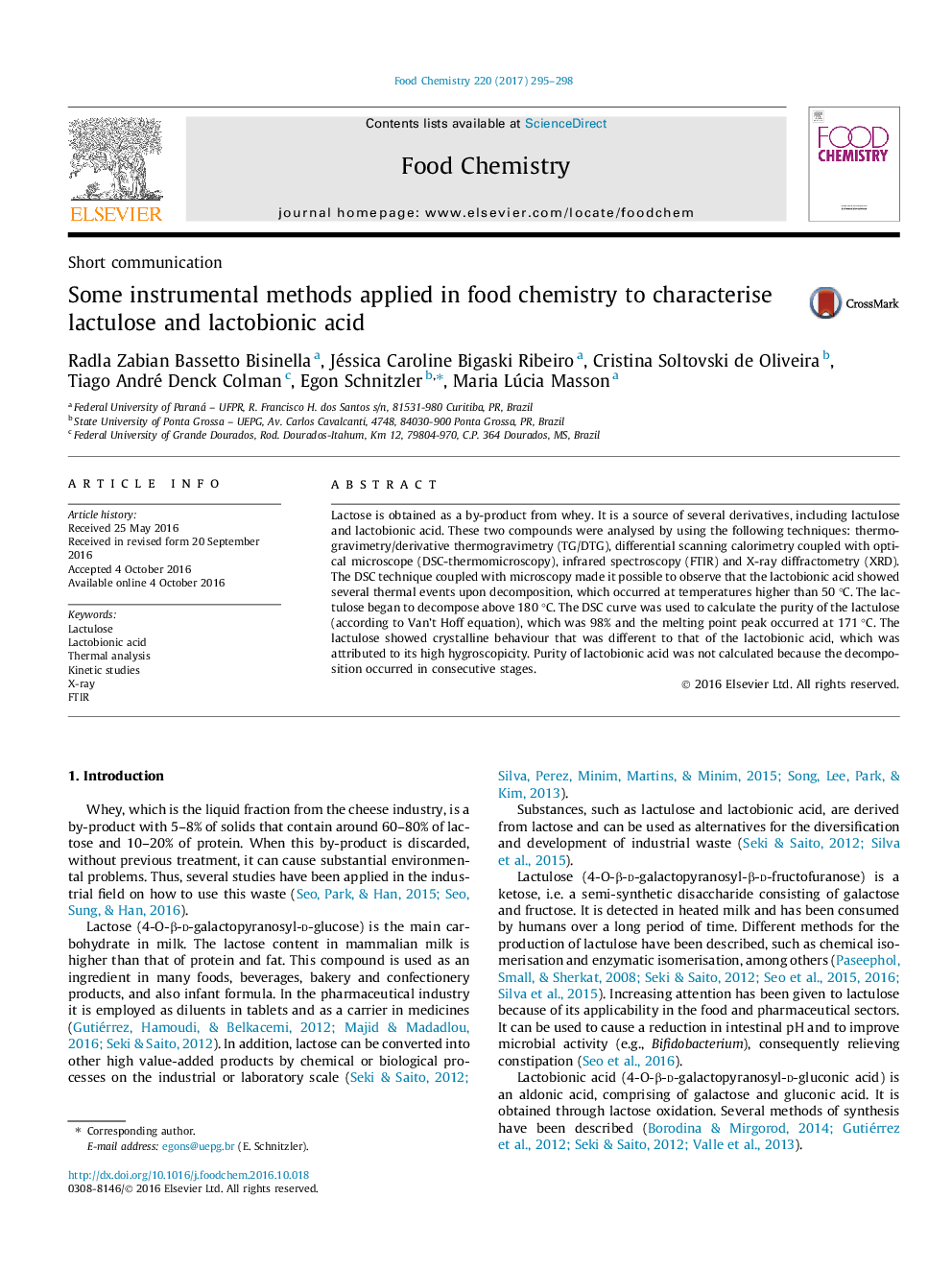| Article ID | Journal | Published Year | Pages | File Type |
|---|---|---|---|---|
| 5134008 | Food Chemistry | 2017 | 4 Pages |
â¢Lactulose and lactobionic acid were analysed by instrumental methods.â¢Optical microscope coupled to DSC allowed to observe the thermal transitions.â¢Kinetic values were lactulose: Ea = 70.24 kJ molâ1 and lactobionic acid Ea = 232.76 kJ molâ1.â¢Purity of lactulose (98%) was determined by Van't Hoff equation.
Lactose is obtained as a by-product from whey. It is a source of several derivatives, including lactulose and lactobionic acid. These two compounds were analysed by using the following techniques: thermogravimetry/derivative thermogravimetry (TG/DTG), differential scanning calorimetry coupled with optical microscope (DSC-thermomicroscopy), infrared spectroscopy (FTIR) and X-ray diffractometry (XRD). The DSC technique coupled with microscopy made it possible to observe that the lactobionic acid showed several thermal events upon decomposition, which occurred at temperatures higher than 50 °C. The lactulose began to decompose above 180 °C. The DSC curve was used to calculate the purity of the lactulose (according to Van't Hoff equation), which was 98% and the melting point peak occurred at 171 °C. The lactulose showed crystalline behaviour that was different to that of the lactobionic acid, which was attributed to its high hygroscopicity. Purity of lactobionic acid was not calculated because the decomposition occurred in consecutive stages.
